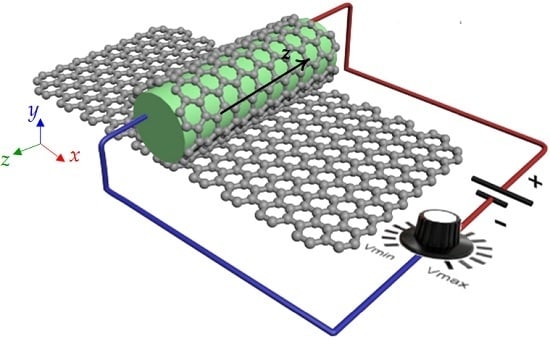Molecular Spectrum Capture by Tuning the Chemical Potential of Graphene
Abstract
:1. Introduction
2. Physical Model and Principles
3. Simulation and Analysis
3.1. Resonance Mode Analysis
3.2. The Dependence of the Resonant Spectrum on the Chemical Potential
4. Sensing Application
4.1. Sensing Characteristics
4.2. Molecular Sensing
5. Conclusions
Acknowledgments
Author Contributions
Conflicts of Interest
References
- Zayats, V.; Smolyaninov, I.I.; Maradudin, A.A. Nano-Optics of surface plasmon polaritons. Phys. Rep. 2005, 408, 131–314. [Google Scholar] [CrossRef]
- Yang, J.F.; Yang, J.J.; Deng, W.; Mao, F.C.; Huang, M. Transmission properties and molecular sensing application of CGPW. Opt. Express 2015, 23, 032289. [Google Scholar] [CrossRef] [PubMed]
- Yang, J.J.; Huang, M.; Li, T.H.; Chen, D.Z.; Tang, H. Manipulating the field distribution of a polygonal SPP resonator based on AZIM. J. Phys. D Appl. Phys. 2014, 47, 085106. [Google Scholar] [CrossRef]
- Hsu, S.H.; Hung, S.C.; Chen, Y.K.; Jian, Z.H. Surface plasmon resonator using high sensitive resonance telecommunication wavelengths for DNA sensors of Mycobacterium tuberculosis with thiol-modified probes. Sensors 2015, 15, 331–340. [Google Scholar] [CrossRef] [PubMed]
- Wang, J.; Hu, C.; Zhang, J. Multifunctional and multi-output plasmonic meta-elements for integrated optical circuits. Opt. Express 2014, 22, 22753–22762. [Google Scholar] [CrossRef] [PubMed]
- Nguyen, H.H.; Park, J.; Kang, S.; Kim, M. Surface Plasmon Resonance: a versatile technique for biosensor applications. Sensors 2015, 15, 10481–10510. [Google Scholar] [CrossRef] [PubMed]
- Shevchenko, Y.; Camci-Unal, G.; Cuttica, D.F.; Dokmeci, M.R.; Albert, J.; Khademhosseini, A. Surface plasmon resonance fiber sensor for real-time and label-free monitoring of cellular behavior. Biosens. Bioelectron. 2014, 56, 359–367. [Google Scholar] [CrossRef] [PubMed]
- Dreaden, E.C.; Alkilany, A.M.; Huang, X.; Murphy, C.J.; El-Sayed, M.A. The golden age: Gold nanoparticles for biomedicine. Chem. Soc. Rev. 2012, 41, 2740–2779. [Google Scholar] [CrossRef] [PubMed]
- Mayer, K.M.; Hafner, J.H. Localized surface plasmon resonance sensors. Chem. Rev. 2011, 111, 3828–3857. [Google Scholar] [CrossRef] [PubMed]
- Gao, Y.X.; Ren, G.B.; Zhu, B.F.; Liu, H.Q.; Lian, Y.D.; Jian, S.S. Analytical model for plasmon modes in graphene-coated nanowire. Opt. Express 2014, 22, 24322–24331. [Google Scholar] [CrossRef] [PubMed]
- Ju, L.; Geng, B.; Horng, J.; Girit, C.; Martin, M.; Hao, Z.; Bechtel, H.A.; Liang, X.; Zettl, A.; Shen, Y.R.; Wang, F. Graphene plasmonics for tunable terahertz metamaterials. Nat. Nanotechnol. 2011, 6, 630–634. [Google Scholar] [CrossRef] [PubMed]
- Xu, W.; Zhu, Z.H.; Liu, K.; Zhang, J.F.; Yuan, X.D.; Lu, Q.S.; Qin, S.Q. Dielectric loaded graphene plasmon waveguide. Opt. Express 2015, 23, 5147–5153. [Google Scholar] [CrossRef] [PubMed]
- Weick, G.; Woollacott, C.; Barnes, W.L.; Hess, O.; Mariani, E. Dirac-Like plasmons in honeycomb lattices of metallic nanoparticles. Phys. Rev. Lett. 2013, 110, 106801. [Google Scholar] [CrossRef] [PubMed]
- Grigorenko, A.N.; Polini, M.; Novoselov, K.S. Graphene plasmonics. Nat. Photonics 2012, 6, 749–758. [Google Scholar] [CrossRef]
- Xu, G.D.; Cao, M.; Liu, C.; Sun, J.; Pan, T. Tunable surface plasmon-polaritons in a gyroelectric slab sandwiched between two graphene layers. Opt. Commun. 2016, 366, 112–118. [Google Scholar] [CrossRef]
- Constant, T.J.; Hornett, S.M.; Chang, D.E.; Hendry, E. All-Optical generation of surface plasmons in graphene. Nat. Phys. 2015, 112, 1–7. [Google Scholar] [CrossRef]
- Politano, A.; Chiarello, G. Plasmon modes in graphene: Status and prospect. Nanoscale 2014, 6, 10927–10940. [Google Scholar] [CrossRef] [PubMed]
- Cupolillo, A.; Politano, A.; Ligato, N.; Perez, D.M.C.; Chiarello, G.; Caputi, L.S. Substrate-Dependent plasmonic properties of supported graphene. Surf. Sci. 2015, 634, 76–80. [Google Scholar] [CrossRef]
- Shojaei, S.; Imannezhad, S. Exciton-Polariton in graphene nano-ribbon embedded in semiconductor microcavity. Phy. B: Condens. Matter 2016, 485, 636–636. [Google Scholar] [CrossRef]
- Hou, H.W.; Teng, J.H.; Palacios, T.; Chua, S. Edge plasmons and cut-off behavior of graphene nano-ribbon waveguides. Opt. Commun. 2016, 370, 226–230. [Google Scholar] [CrossRef]
- Balaban, M.V.; Shapoval, O.V.; Nosich, A.I. THz wave scattering by a graphene strip and a disk in the free space: integral equation analysis and surface plasmon resonances. J. Opt. 2013, 15, 990–996. [Google Scholar] [CrossRef]
- Nia, B.A.; Yousefi, L.; Shahabadi, M. Integrated optical phased array nano-antenna system using a plasmonic rotman lens. J. Lightw. Technol. 2016, 34, 2118–2126. [Google Scholar] [CrossRef]
- Rifat, A.A.; Mahdiraji, G.A.; Chow, D.M.; Shee, Y.G.; Ahmed, R.; Adikan, F.R.M. Photonic crystal fiber-based surface plasmon resonance sensor with selective analyte channels and graphene-silver deposited core. Sensors 2015, 15, 11499–11510. [Google Scholar] [CrossRef] [PubMed]
- He, X.; Zhang, X.; Zhang, H.; Xu, M. Graphene covered on microfiber exhibiting polarization and polarization-dependent saturable absorption. IEEE J. Sel. Top. Quantum Electron. 2014, 20, 4500107. [Google Scholar]
- Wu, Y.; Yao, B.; Zhang, A.; Rao, Y.; Wang, Z.; Cheng, Y.; Gong, Y.; Zhang, W.; Chen, Y.; Chiang, K.S. Graphene-Coated microfiber Bragg grating for high-sensitivity gas sensing. Opt. Lett. 2014, 39, 1235–1237. [Google Scholar] [CrossRef] [PubMed]
- Li, W.; Chen, B.; Meng, C.; Fang, W.; Xiao, Y.; Li, X.; Hu, Z.; Xu, Y.; Tong, L.; Wang, H.; et al. Ultrafast all-optical graphene modulator. Nano Lett. 2014, 14, 955–959. [Google Scholar] [CrossRef] [PubMed]
- Cuevas, M.; Riso, M.A.; Depine, R.A. Complex frequencies and field distributions of localized surface plasmon modes in graphene-coated subwavelength wires. J. Quant. Spectrosc. Radiat. Transf. 2016, 173, 26–33. [Google Scholar] [CrossRef]
- Zhao, J.; Liu, X.; Qiu, W.; Ma, Y.; Huang, Y.; Wang, J.X.; Qiang, K.; Pan, J.Q. Surface-Plasmon-Polariton whispering-gallery mode analysis of the graphene monolayer coated InGaAs nanowire cavity. Opt. Express 2014, 22, 5754–5761. [Google Scholar] [CrossRef] [PubMed]
- Robb, G. Graphene plasmonics: Ultra-Tunable graphene light source. Nat. Photonics 2015, 10, 3–4. [Google Scholar] [CrossRef]
- Francescato, Y.; Giannini, V.; Yang, J.J.; Huang, M.; Maier, S.A. Graphene Sandwiches as a Platform for Broadband Molecular Spectroscopy. ACS Photonics 2014, 1, 437–443. [Google Scholar] [CrossRef]
- Rodrigo, D.; Limaj, O.; Janner, D.; Etezadi, D.; García de Abajo, F.J.; Pruneri, V.; Altug, H. Mid-Infrared plasmonic biosensing with graphene. Science 2015, 349, 165–168. [Google Scholar] [CrossRef] [PubMed]
- Schedin, F.; Geim, A.K.; Morozov, S.V.; Hill, E.W.; Blake, P.; Katsnelson, M.I.; Novoselov, K.S. Detection of individual gas molecules adsorbed on graphene. Nat. Mater. 2007, 6, 652–655. [Google Scholar] [CrossRef] [PubMed]
- Lu, Y.; Goldsmith, B.R.; Kybert, N.J.; Johnson, A.T.C. DNA-Decorated graphene chemical sensors. Appl. Phys. Lett. 2010, 97, 083107. [Google Scholar] [CrossRef]
- Huang, Z.R.; Wang, L.L.; Sun, B.; He, M.D.; Liu, J.Q.; Li, H.J.; Zhai, X. A mid-infrared fast-tunable graphene ring resonator based on guided-plasmonic wave resonance on a curved graphene surface. J. Opt. 2014, 16, 105004. [Google Scholar] [CrossRef]
- Francescato, Y.; Giannini, V.; Maier, S.A. Strongly confined gap plasmon modes in graphene sandwiches and graphene-on-silicon. New J. Phys. 2013, 15, 063020. [Google Scholar] [CrossRef]
- Gusynin, V.P.; Sharapov, S.G.; Carbotte, J.P. Magneto-Optical conductivity in graphene. J. Phys. Condens. Matter 2007, 19, 026222. [Google Scholar] [CrossRef]
- Vakil, A.; Engheta, N. Transformation Optics Using Graphene. Science 2011, 32, 1291–1294. [Google Scholar] [CrossRef] [PubMed]
- Gao, W.L.; Shu, J.; Qiu, C.Y.; Xu, Q.F. Excitation of plasmonic wave in graphene by guide-mode resonances. ACS Nano 2012, 6, 7806–7813. [Google Scholar] [PubMed]
- Dragoman, D.; Dragoman, M.; Plana, R. Tunable electrical superlattices in periodically gated bilayer graphene. J. Appl. Phys. 2010, 107, 044312. [Google Scholar] [CrossRef]
- NIST Chemistry WebBook. Available online: http://webbook.nist.gov/chemistry/name-ser.html (accessed on 6 December 2015).

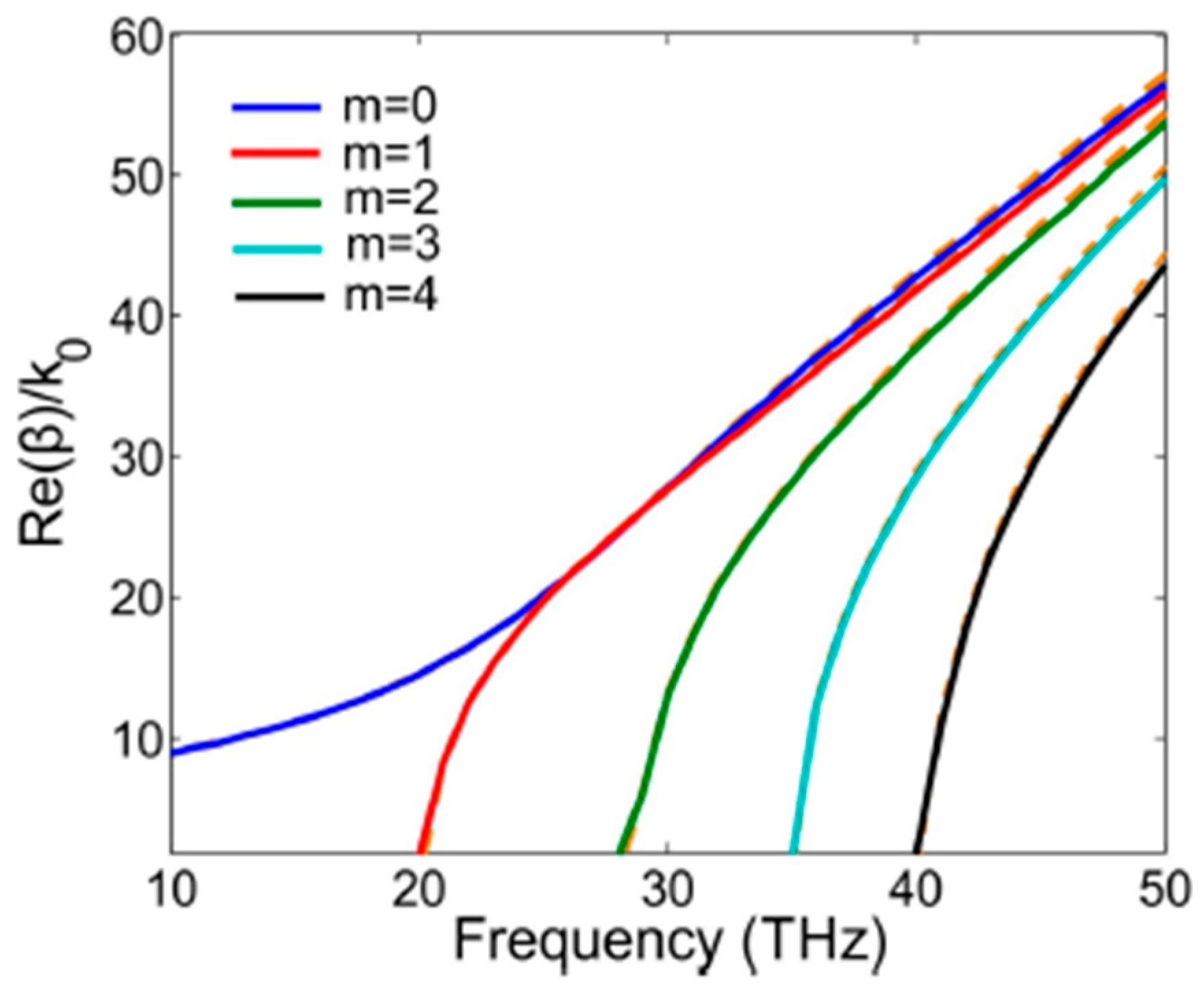
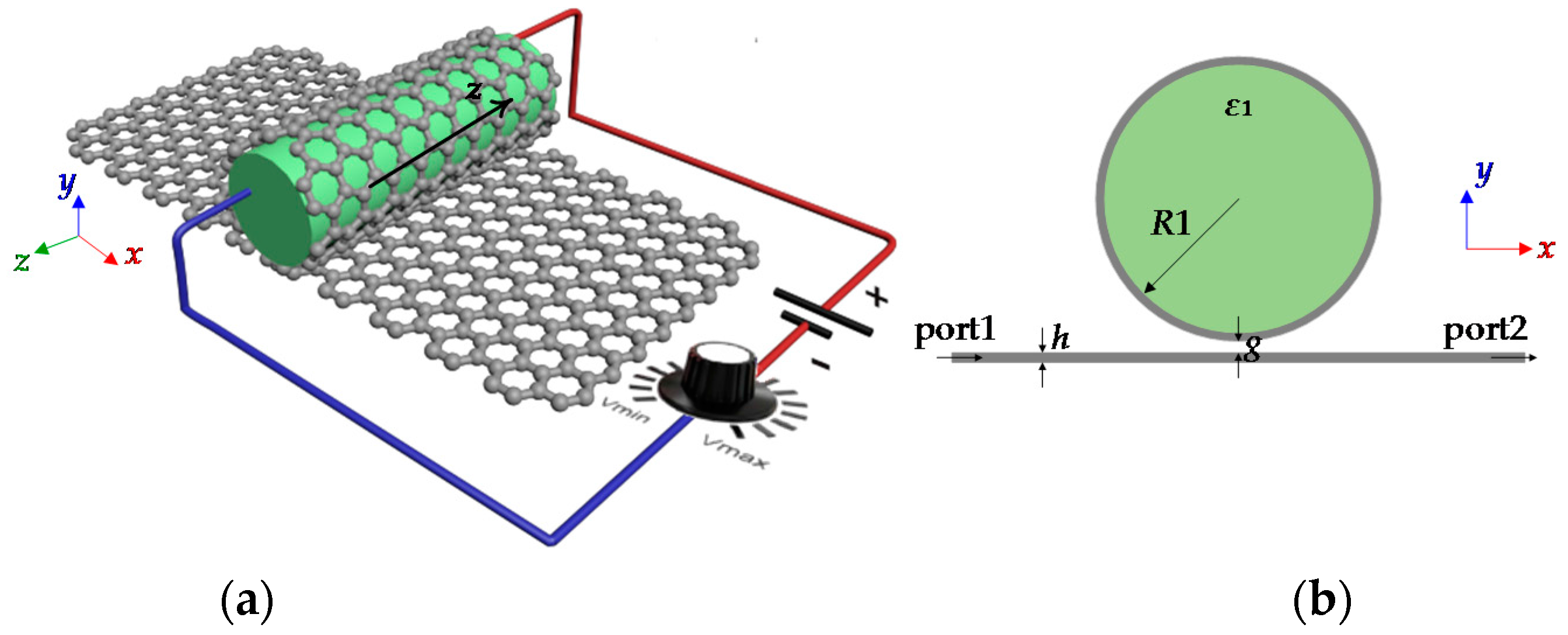
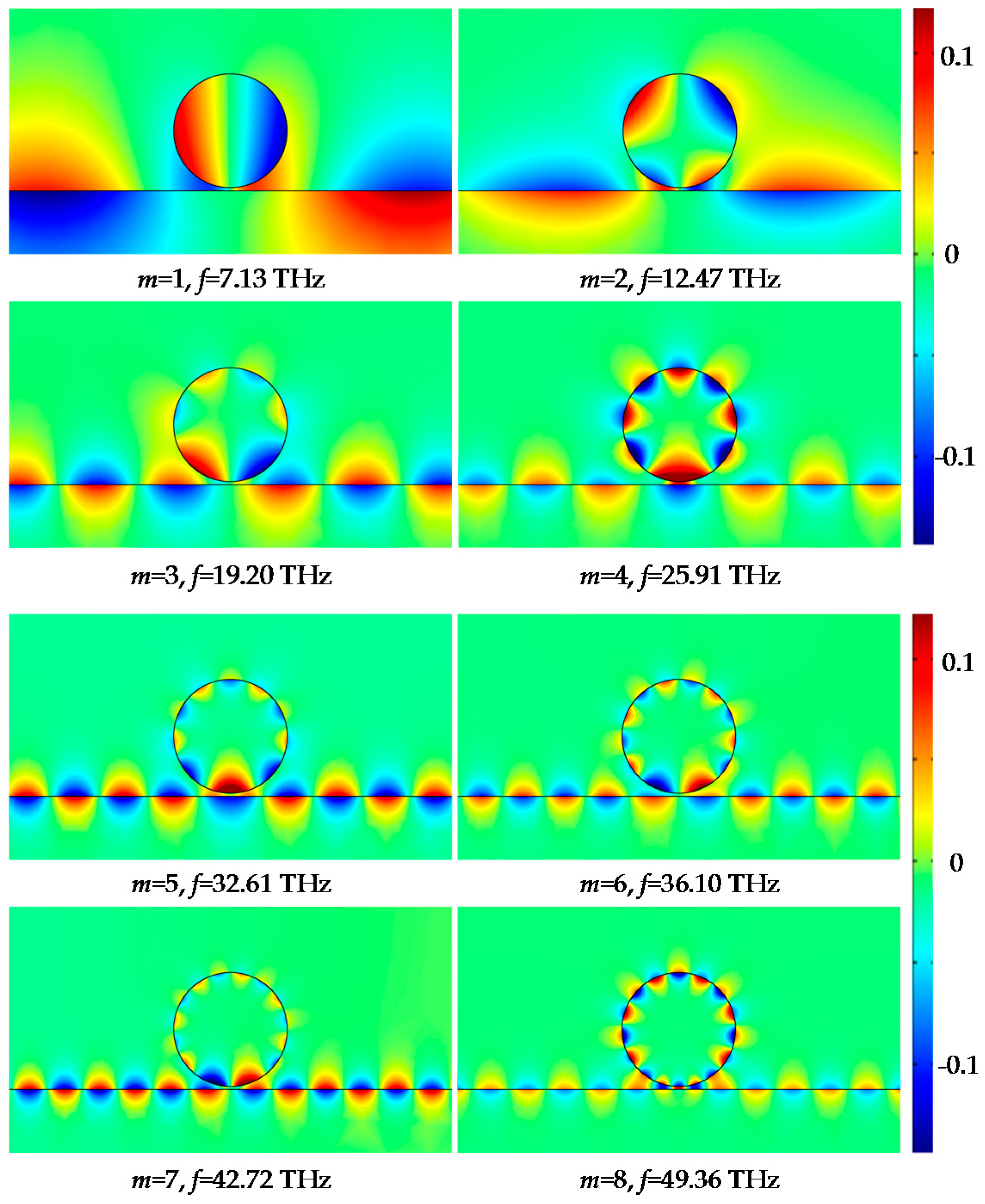
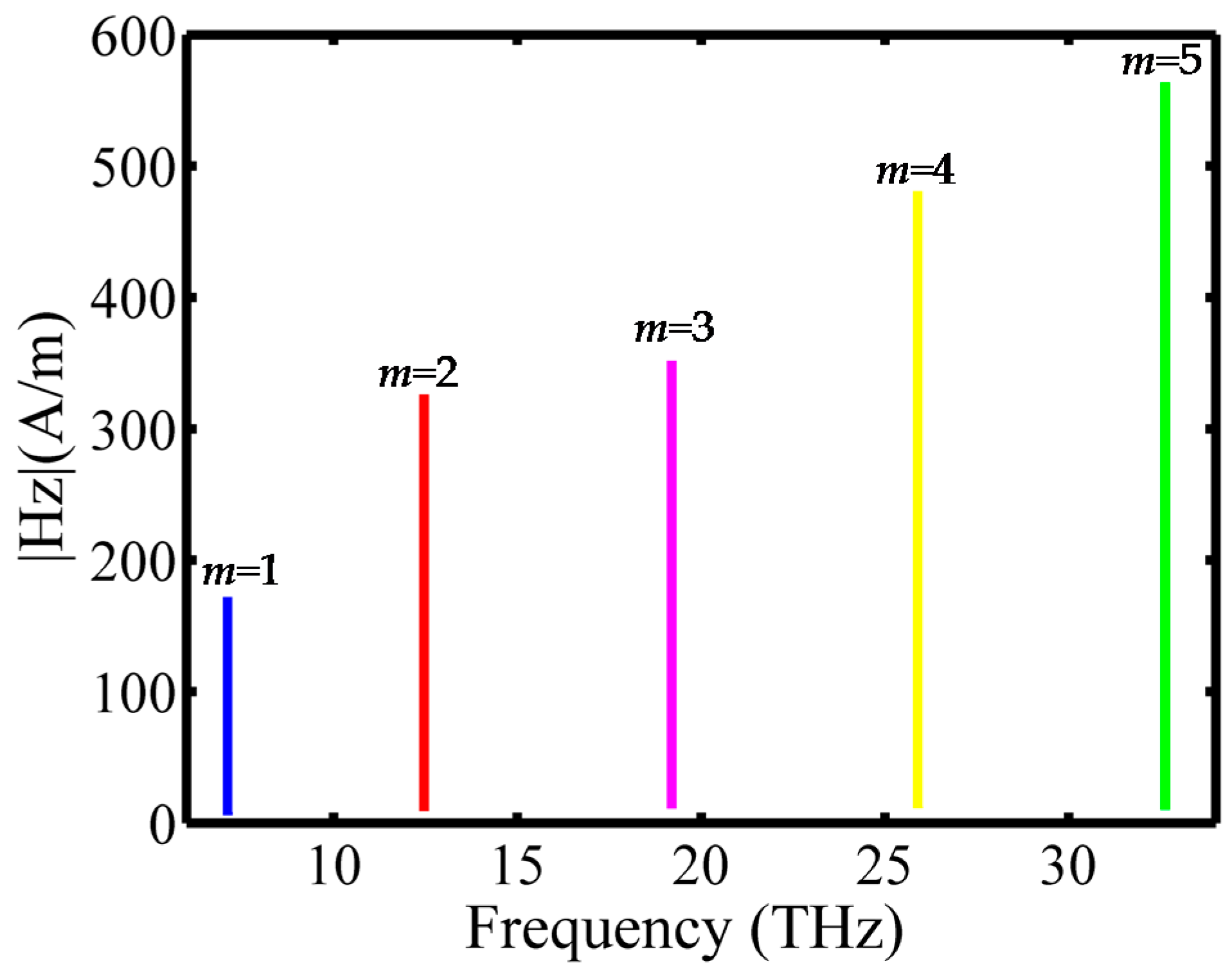
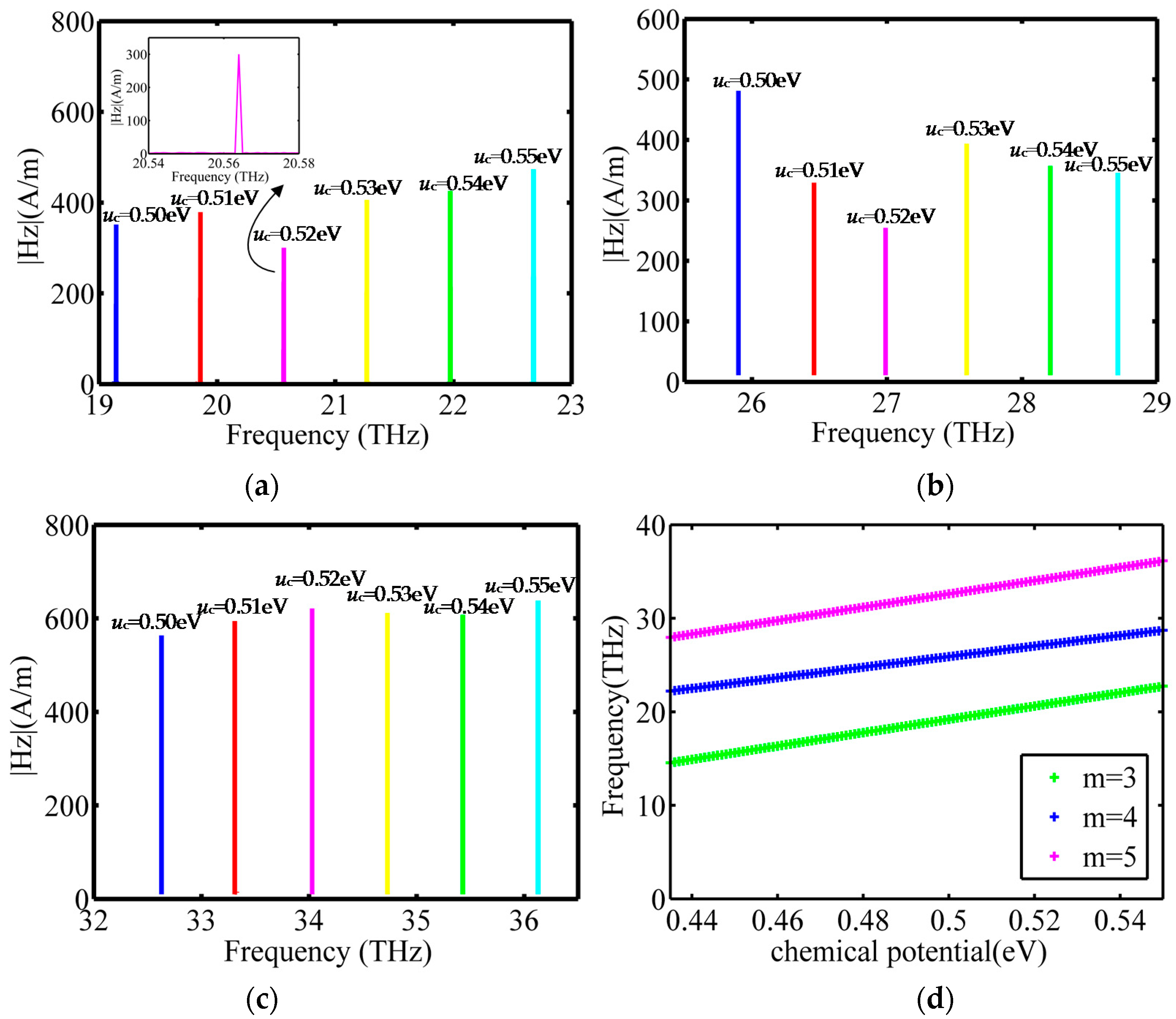
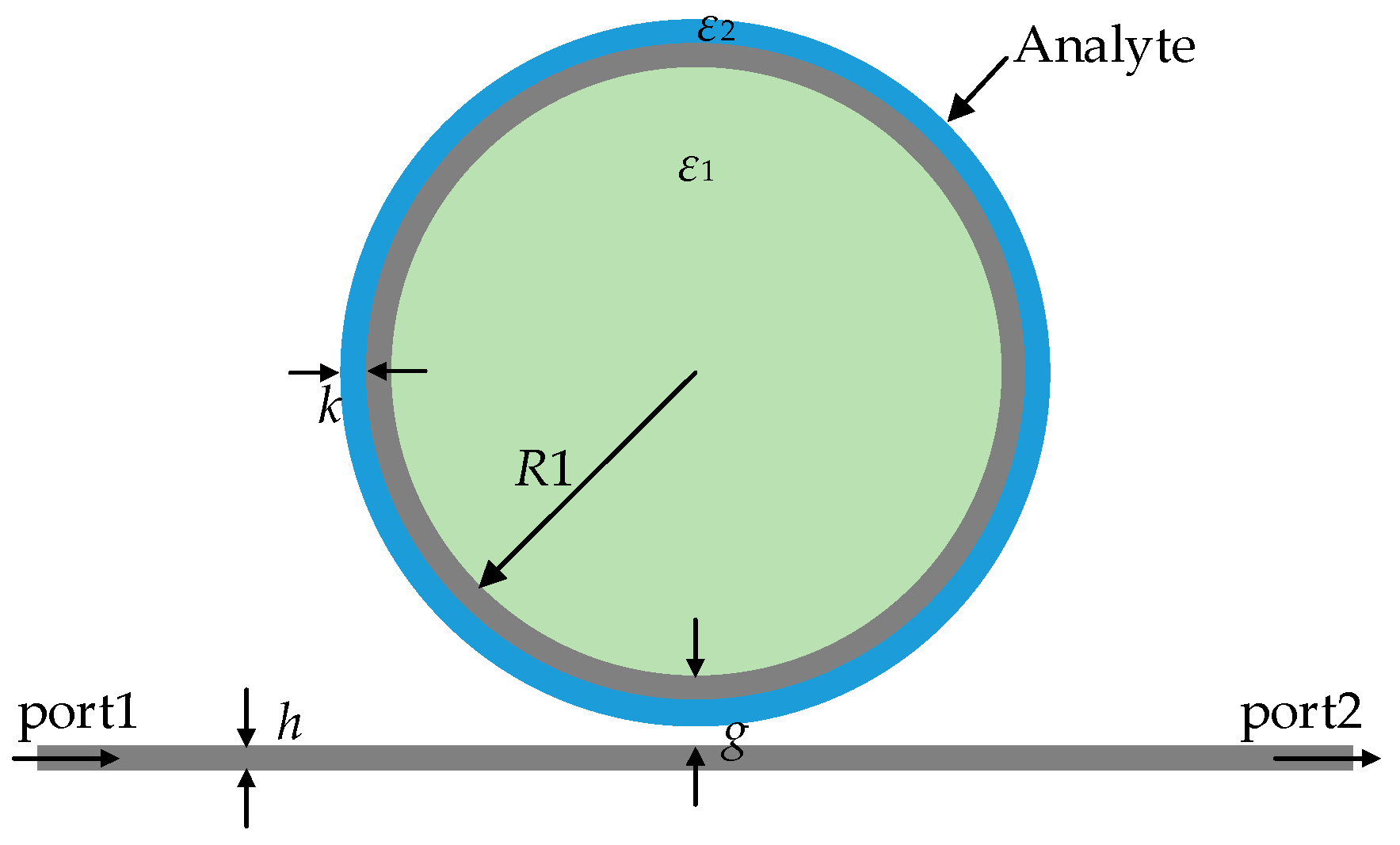
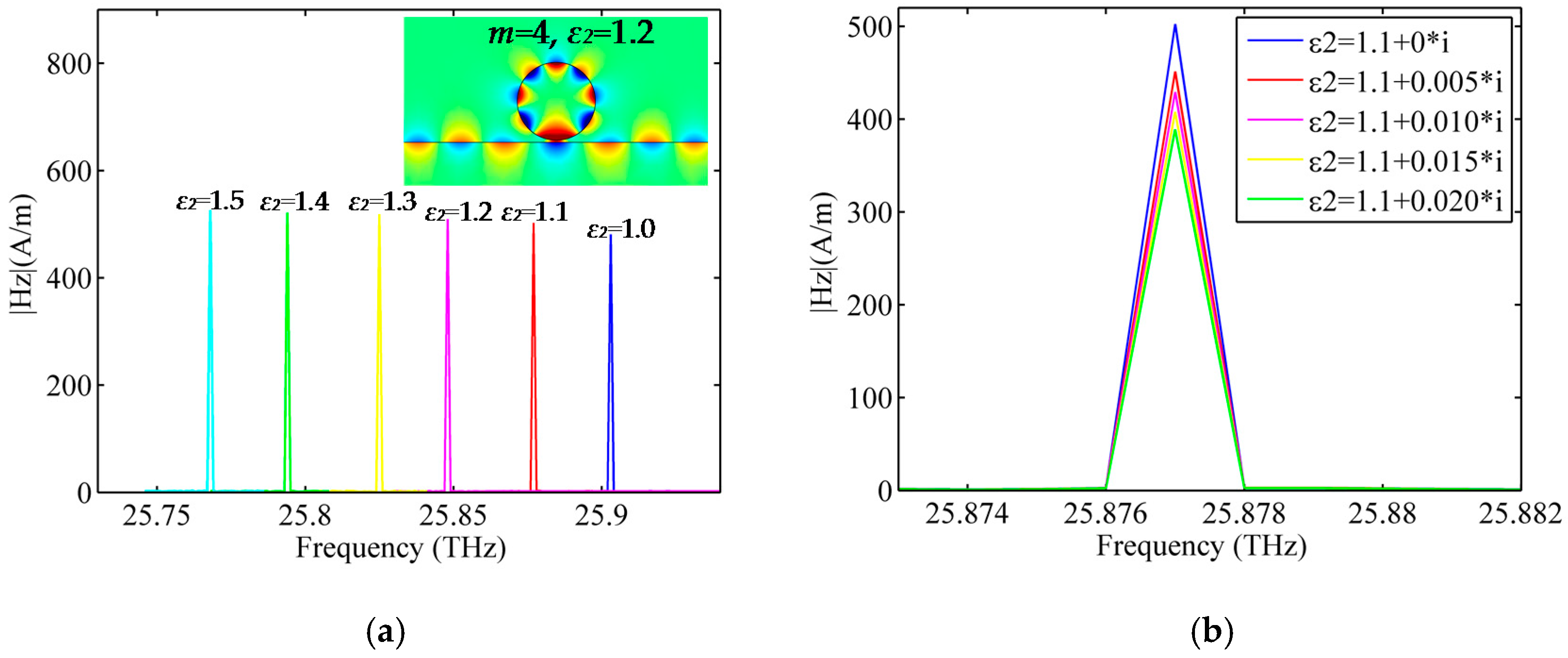
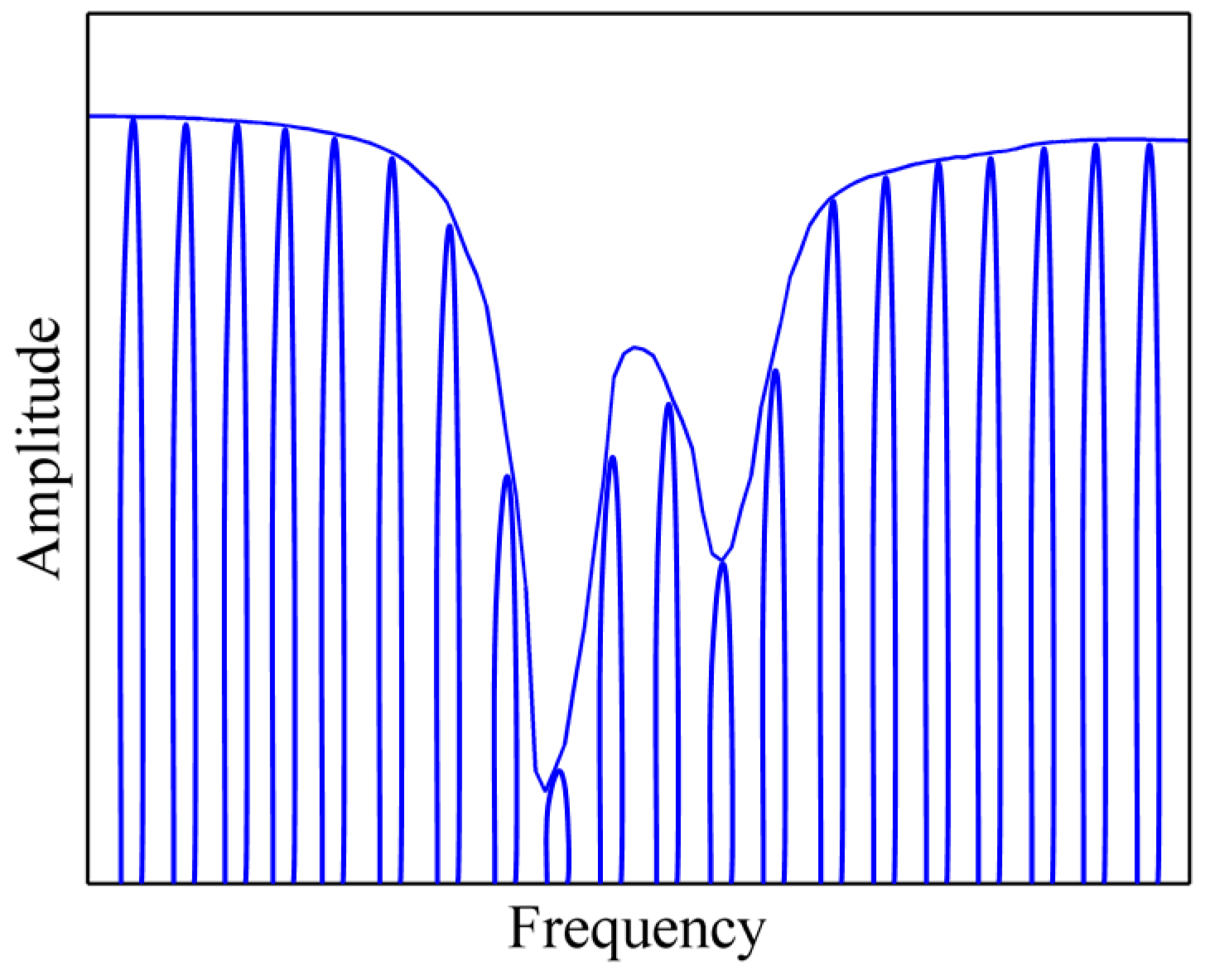
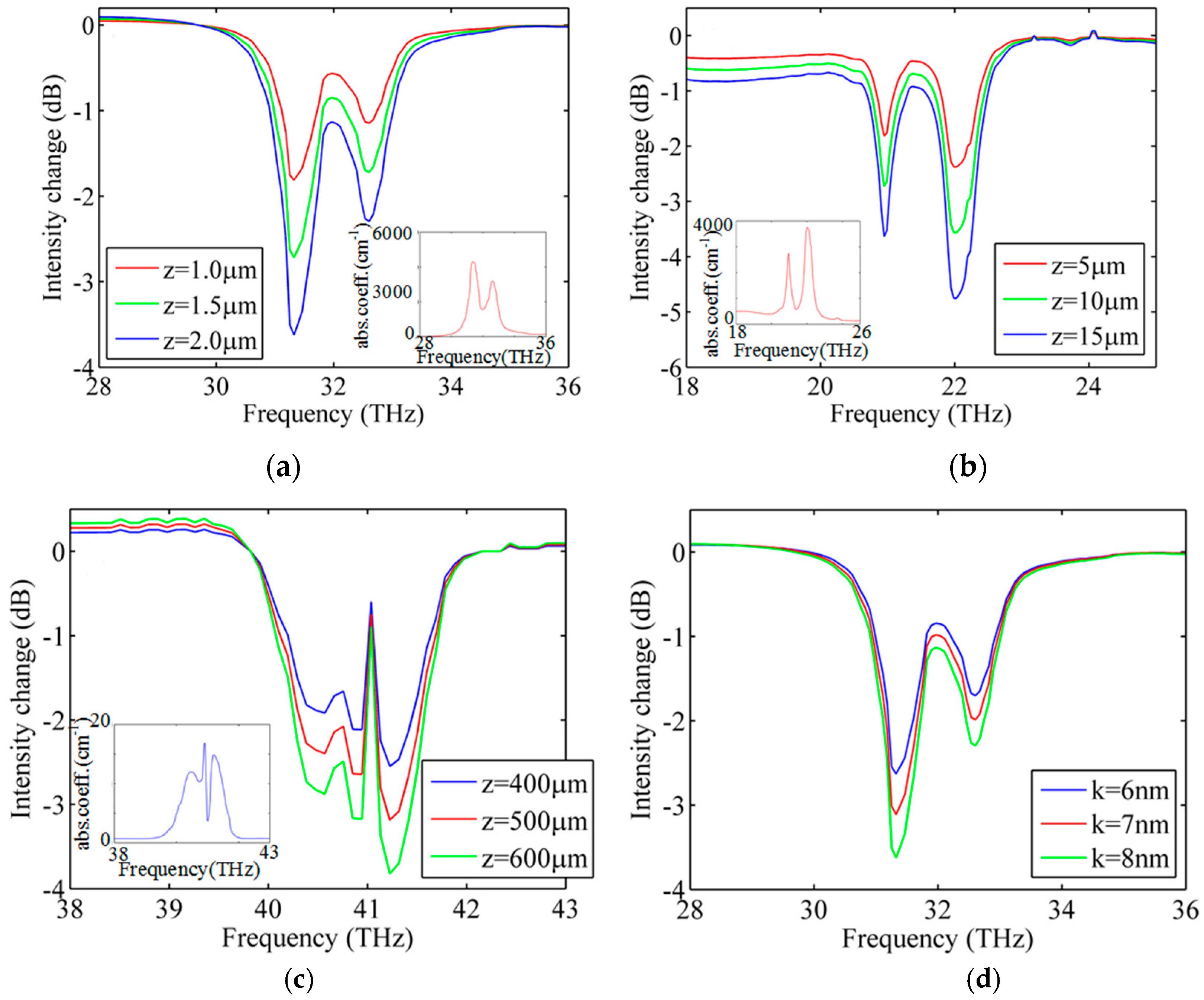
| Mode | 1 | 2 | 3 | 4 | 5 | 6 | 7 | 8 |
|---|---|---|---|---|---|---|---|---|
| fe(THz) | 7.133 | 12.473 | 19.198 | 25.907 | 32.605 | 36.103 | 42.717 | 49.361 |
| fr(THz) | 7.131 | 12.469 | 19.189 | 25.893 | 32.590 | 36.093 | 42.712 | 49.357 |
© 2016 by the authors; licensee MDPI, Basel, Switzerland. This article is an open access article distributed under the terms and conditions of the Creative Commons Attribution (CC-BY) license (http://creativecommons.org/licenses/by/4.0/).
Share and Cite
Cheng, Y.; Yang, J.; Lu, Q.; Tang, H.; Huang, M. Molecular Spectrum Capture by Tuning the Chemical Potential of Graphene. Sensors 2016, 16, 773. https://doi.org/10.3390/s16060773
Cheng Y, Yang J, Lu Q, Tang H, Huang M. Molecular Spectrum Capture by Tuning the Chemical Potential of Graphene. Sensors. 2016; 16(6):773. https://doi.org/10.3390/s16060773
Chicago/Turabian StyleCheng, Yue, Jingjing Yang, Qiannan Lu, Hao Tang, and Ming Huang. 2016. "Molecular Spectrum Capture by Tuning the Chemical Potential of Graphene" Sensors 16, no. 6: 773. https://doi.org/10.3390/s16060773
APA StyleCheng, Y., Yang, J., Lu, Q., Tang, H., & Huang, M. (2016). Molecular Spectrum Capture by Tuning the Chemical Potential of Graphene. Sensors, 16(6), 773. https://doi.org/10.3390/s16060773





